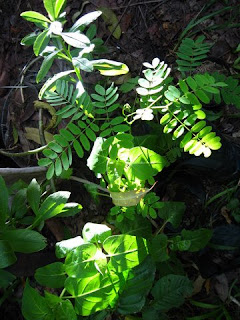
I am glad to say that I have that-time-of-the-month self-sufficiency. I make my own bleeding pads with some washable cotton casings and kapok stuffing. I think it to be an improvement of the olden
pasador cloths that were folded up. And of course, a gigantic step beyond the plastic, weird-fake-flower-smelling, poorly designed sanitary napkins. Maybe soon enough I'll write an entry on the kapok tree, but today I've been taking some fiber out, so I'd like to show that.
Of course, as the gushing forth occurs monthly, I need to make sure that I have a good supply of stuffing, and sometimes it piles up in my room until I have the time to process them-- that is, take them out of the shells, remove the seeds and solid parts, fluff them up, and store them.
It's pretty much a no-brainer, but I hope that this can motivate the readers of this blog (hello) to reconsider producing some of their "commodities". Pads and tampons are so full of chemicals, and require energy to be harvested, produced, packaged, shipped, sold. These are free, and planting quick-growing kapok trees helps provide habitat to bats.
These were harvested from a plant barely two years old. You must first break the fruit apart (if it's not already open, which it sometimes is):

Inside are silky fibers that are amazingly soft. And a lot of seeds that look like black peas. You can munch on them a little bit while you are working.

Scoop the fiber and seeds out. This is my favorite part. It comes off pretty easily.

Don't be disconcerted by the amount of seeds. Here is an easy way to get them all out and fluff the fiber up at the same time. Put a work cloth over your lap. While reading or whatever, rub the fiber between your palms. Just keep doing it, thinking of breaking up the little segments of fiber and making one whole big piece of fluff. Before you know it, on the work cloth will be a lot of little seeds.
Work in small batches.

The seeds you can store first inside the empty pods, that is fun to do.


The fiber, store in a place that is dry, like a glass or wooden jar. The empty pods can be used for so many things-- putting a bit of food or dried fruit in for small trips, storing small pieces of soap, etc.







































